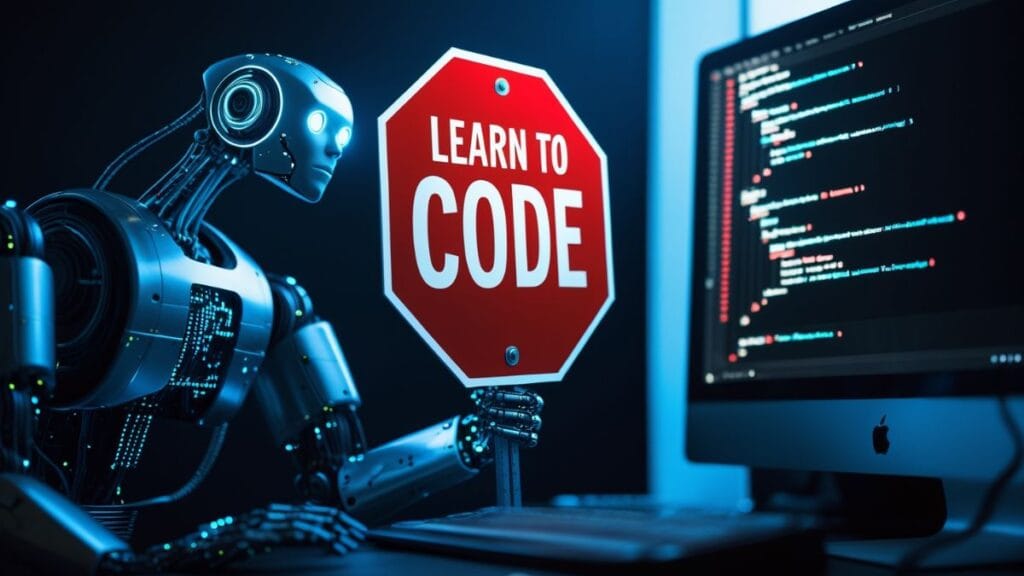In a recent TED talk, former Google CEO Eric Schmidt points out that we need about 90 more gigawatts of power in America alone to feed our AI hunger. That equals 90 nuclear power plants. We currently build zero.
This is the real story most miss when they write about AI. The limits of our power grid might slow down progress more than any technical problem with the AI itself.
The Scale of AI’s Energy Problem
When Schmidt talks about power needs for AI, he speaks in terms that sound like science fiction. A single large AI data center now needs as much power as an entire city. Arab nations plan to build five to ten gigawatts of data centers. India wants to build a ten-gigawatt data center.
To grasp how much power these systems use, just look at what happens when AI makes plans. Modern AI doesn’t just spit out answers – it tries paths, doubles back, and tests ideas in a process that looks a lot like human thought. This “planning” step, Schmidt notes, needs 100 to 1,000 times more power than what we use now.
He explains: “The technology goes from deep learning to reinforcement learning to something called test-time compute, where not only are you doing planning, but you’re also learning while you’re doing planning.” Each step up this ladder means a huge jump in power needs.
What This Means For Your Business
If you run a tech firm or plan to use AI tools in the next five years, these power limits will hit your bottom line in ways you might not expect:
Higher costs: As AI firms fight for power, expect prices to rise. The cost to run AI tools will go up as power gets scarce.
Location matters: Regions with cheap, plentiful power will have a huge edge. Schmidt points to Canada with its vast hydroelectric resources as an ideal spot. Firms may need to place AI work near power sources rather than talent pools.
Supply chain risks: The fight for AI power extends beyond just finding outlets to plug into. Schmidt warns that the US-China tech battle puts the whole supply chain at risk, from advanced chips to “the little packaging and the little glue things” that make computers work.
The Arms Race No One Plans For
The race for AI leads to a weird twist in global politics. Schmidt describes a scary case: what if one country gets just six months ahead of others in AI progress?
In normal tech races, six months isn’t much. But AI improves so fast that the leader might get tools to “reinvent the world.” This creates a new form of threat that old political thinking doesn’t cover.
As Schmidt puts it: “These are network-effect businesses. And in network-effect businesses, it is the slope of your improvement that determines everything.” The first to reach advanced AI could pull so far ahead that others can never catch up.
This leads to a grim math for those who fall behind: if you can’t catch up by normal means, what do you do? Schmidt lays out the steps a nation might take: steal code, plant spies, sabotage systems, or – in the worst case – bomb data centers.
“Do you think I’m insane?” Schmidt asks. “These conversations are occurring around nuclear opponents today in our world.”
The Race Between Open and Closed Models
Two paths split in the AI world: closed systems (mostly in the US) and open systems (growing in China). Each has pros and cons for this power crisis.
Closed systems like those from OpenAI and Google let firms control and tune their power use. They can make smart trade-offs between what the AI does and what power it needs.
Open systems, which China pushes hard, spread fast and wide. They often use less power since many minds work to make them more lean. Schmidt notes how DeepSeek, a Chinese AI, found ways to work around US chip bans by simply making their code more smart.
This means we might face a world where the US has power-hungry but safe AI, while small firms and bad actors use less fancy but more power-wise open AI from China.
What Can We Do?
The next few years give us a chance to fix this problem. Some key steps we might take:
Optimize AI: Make it do the same work with less power. As Schmidt says, “There’s a lot of algorithmic improvements, and you will need less power.”
Build power: We need more nuclear, solar, wind, and other clean power sources fast. The scale is huge, but so is the need.
Plan for peaks: Most AI firms now build for “peak load” – the most they could ever need. Better sharing of resources could smooth out the rough spots.
Move to the power: Just as old mills built next to rivers, AI firms may need to go where power waits, not where staff want to live.
The Future Is Still Bright
Even with these problems, Schmidt stays hopeful. The boost in work output from AI could hit 30 percent per year – a rate so high that economists “have no models for what that kind of increase in productivity looks like.”
The key is to use this power wisely. “Each and every one of you has a reason to use this technology,” Schmidt tells the TED crowd. “If you’re not using this technology, you’re not going to be relevant compared to your peer groups and your competitors.”
Will we solve the power problem in time? No one knows. But one thing is clear: the AI race is not just about smarts, data, or chips. It’s about plugs, wires, and the basic juice that makes our world run. Those who plan for this now will have a big edge as the rest of the world plays catch-up.
Want to stay ahead of the AI curve? Start thinking about where your power will come from, not just what model you’ll use. The firms that solve the power problem first might just win the whole AI game.


